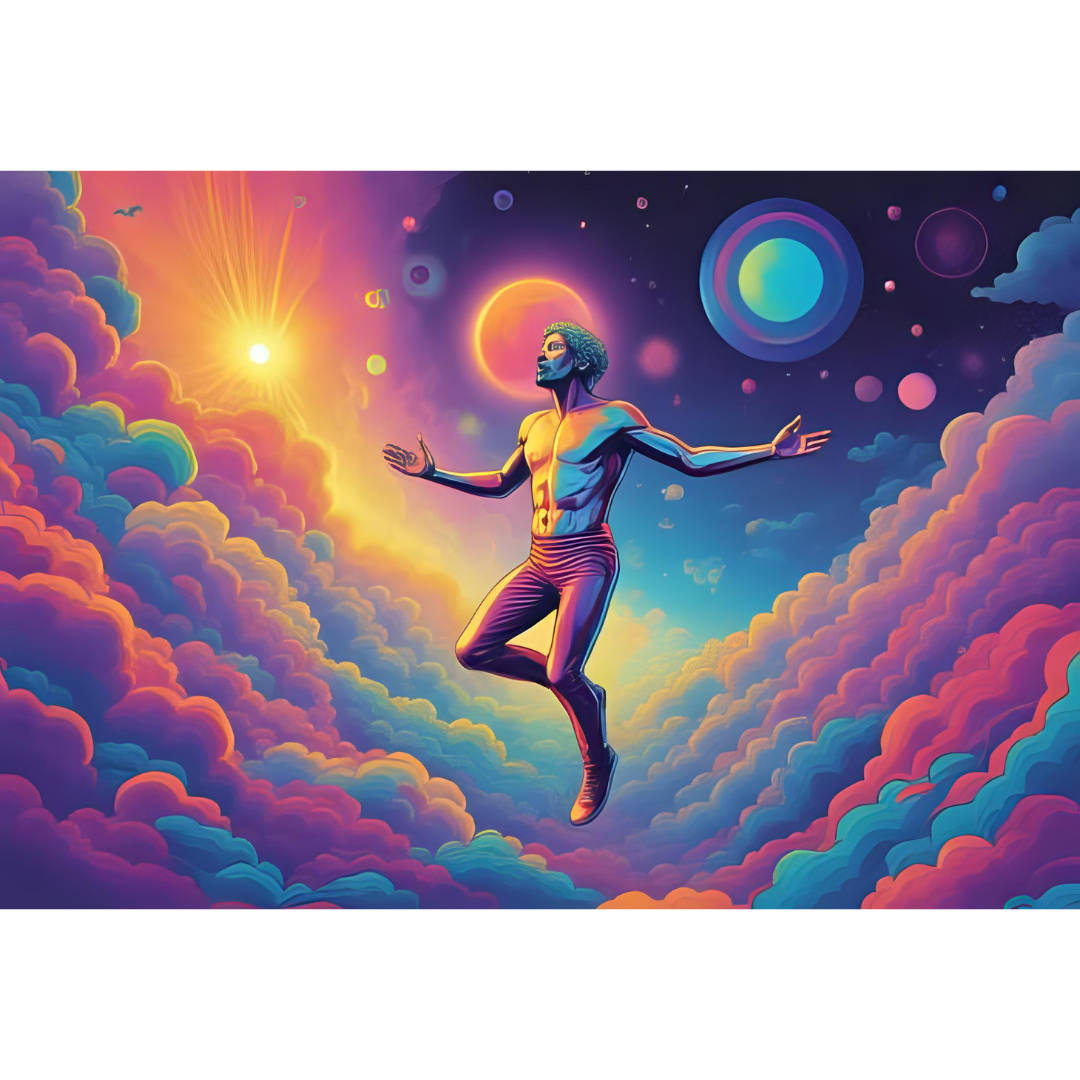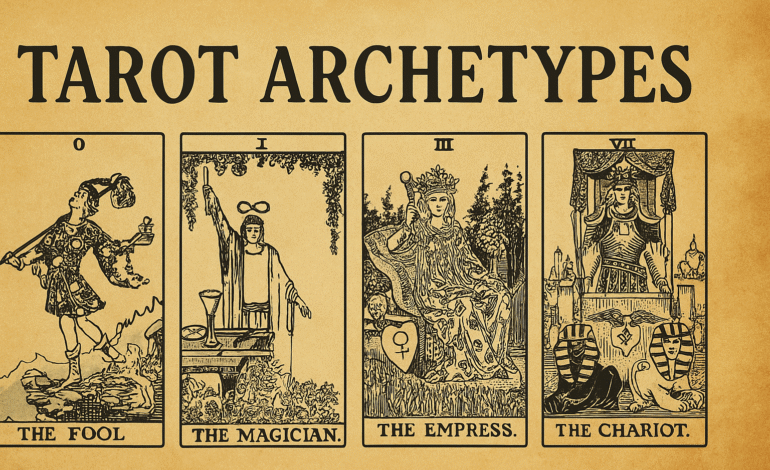
Tarot Archetypes: A Deep Dive into the Major Arcana
The Fool’s Journey: Exploring the Meaning of the Tarot Archetypes
What Are The Tarot Archetypes?
Archetypes are timeless symbols, roles, and patterns that reside deep within the collective human psyche. The term was popularized by psychologist Carl Jung, who described archetypes as primordial images and instinctive blueprints shared across cultures and epochs. These internal models shape how we perceive the world, react to situations, and construct meaning. From the Hero to the Sage, the Shadow to the Mother, these universal motifs appear in myths, religions, literature, dreams—and most powerfully, in Tarot.
Archetypes are not fixed personalities but symbolic energies that can be activated within any individual. They express themselves through our desires, fears, life phases, and spiritual awakenings. When we engage with archetypes consciously, they become powerful tools for self-discovery, healing, and transformation.
In Tarot, each Major Arcana card embodies an archetype. These are not simply figures on cards but mirrors of our inner world. They reflect both our highest potential and our shadowy depths. Studying them is like holding a key to your soul’s symbolic language.
Understanding archetypes gives deeper context to life’s patterns and challenges. It helps you realize that you’re not just experiencing random events, but participating in an ancient and meaningful mythic story—your own.
Tarot as a Mirror of the Psyche
The Tarot is more than a divination tool—it’s a symbolic mirror that reflects the landscape of the soul. Each card is a lens through which to view your inner world, casting light on hidden feelings, unconscious patterns, and subtle energies influencing your journey. Whether you’re seeking clarity, healing, or spiritual insight, Tarot invites you to connect more deeply with your intuitive self.
The Major Arcana, in particular, offers a profound structure for psychological and spiritual exploration. These 22 cards represent stages of growth, trials, initiations, and archetypal figures that exist within all of us. They don’t tell you what to do—they show you what is, on the level of the soul.
When approached with intention, Tarot becomes a kind of symbolic psychotherapy. The cards give shape to internal conflicts and reveal the parts of ourselves we often ignore—our potential, our pain, and our power. As Jung suggested, what we don’t make conscious, becomes fate. Tarot helps us bring it to light.
Rather than predicting the future, the Tarot helps reveal why things happen and what deeper energies are at play. In this way, it becomes a sacred mirror—a conversation between your higher self and your conscious awareness.
The Fool’s Journey: An Overview
The Fool’s Journey is a mythic roadmap of spiritual evolution embedded in the 22 cards of the Major Arcana. It begins with The Fool (0)—a symbol of innocence and limitless potential—and ends with The World (XXI)—a symbol of cosmic completion and integration. Each card in between marks a step along this winding path of initiation, trial, and transformation.
The journey is cyclical, not linear. Like life itself, we spiral through these archetypes again and again, each time with deeper awareness. The Fool ventures out with no plan, unaware of the trials ahead—but with faith in the process. Along the way, he meets teachers, confronts shadows, builds wisdom, and learns to balance the forces within himself.
This narrative mirrors the Hero’s Journey described by Joseph Campbell: the call, the descent, the trials, the return. But it is also a deeply personal experience—a reflection of your own inner growth. When you draw a Major Arcana card, you’re not just pulling a message; you’re locating yourself in the grand myth of becoming.
Seeing life through the Fool’s Journey allows you to view your experiences not as chaos, but as sacred stepping stones. Each moment, each card, is a teacher.
How to Work With Archetypes in Tarot
Working with Tarot archetypes is not about memorizing meanings—it’s about forming a relationship with each card as a living symbol. These archetypes speak a symbolic language that your intuition already understands. The key is learning to listen.
Start by journaling your responses to each card. What emotions arise? What stories or memories surface? Let the imagery guide you. Over time, you’ll begin to recognize when you’re “living out” a particular archetype. Are you in a Tower phase? Embracing the Empress? Resisting the Hanged Man?
Meditation is another powerful tool. Visualize stepping into the card. Interact with the figure inside. Ask it questions. Archetypes will speak if you treat them with reverence.
In readings, pay attention to where the archetype falls in the spread. Is it something you’re embracing, resisting, or being asked to embody? Each card has light and shadow aspects, and knowing which part is active gives the reading depth.
You can also invoke archetypes intentionally. Need courage? Meditate on Strength. Seeking clarity? Work with the High Priestess. Archetypes aren’t abstract—they are doorways into specific frequencies of consciousness.
Working with Tarot archetypes is a lifelong journey. The more you engage, the more they reveal. You’re not just reading cards—you’re becoming them.
The Fool: The Cosmic Leap of Faith
The Fool is the pure spark of potential—the spirit of divine innocence before experience. Numbered 0, it belongs nowhere and everywhere, existing outside structure and form. This archetype represents the moment before the first step, the leap of faith into the unknown.
With a small satchel of tools and a loyal companion at his heels, The Fool walks toward the edge of a cliff, eyes turned skyward. He is unburdened by the past, free of fear, and full of trust. While others may call him naïve, The Fool is blessed with divine courage. He teaches that faith is sometimes wiser than caution.
The Fool invites you to embrace new beginnings, even when you can’t see the outcome. It speaks to the part of you that remembers life is a game, an adventure, a sacred mystery. When this card appears, you’re being asked to surrender to the moment, to leap even when logic protests.
On a deeper level, The Fool is the soul itself—entering the human experience for the first time, eyes wide open to the dance of life. His journey through the rest of the Major Arcana represents the unfolding of consciousness through experience.
Yet The Fool is also a reminder that even after we’ve learned and lived and conquered, we must return to the innocence we started with. He is both the beginning and the end, the first breath of awakening—and the final breath of liberation.
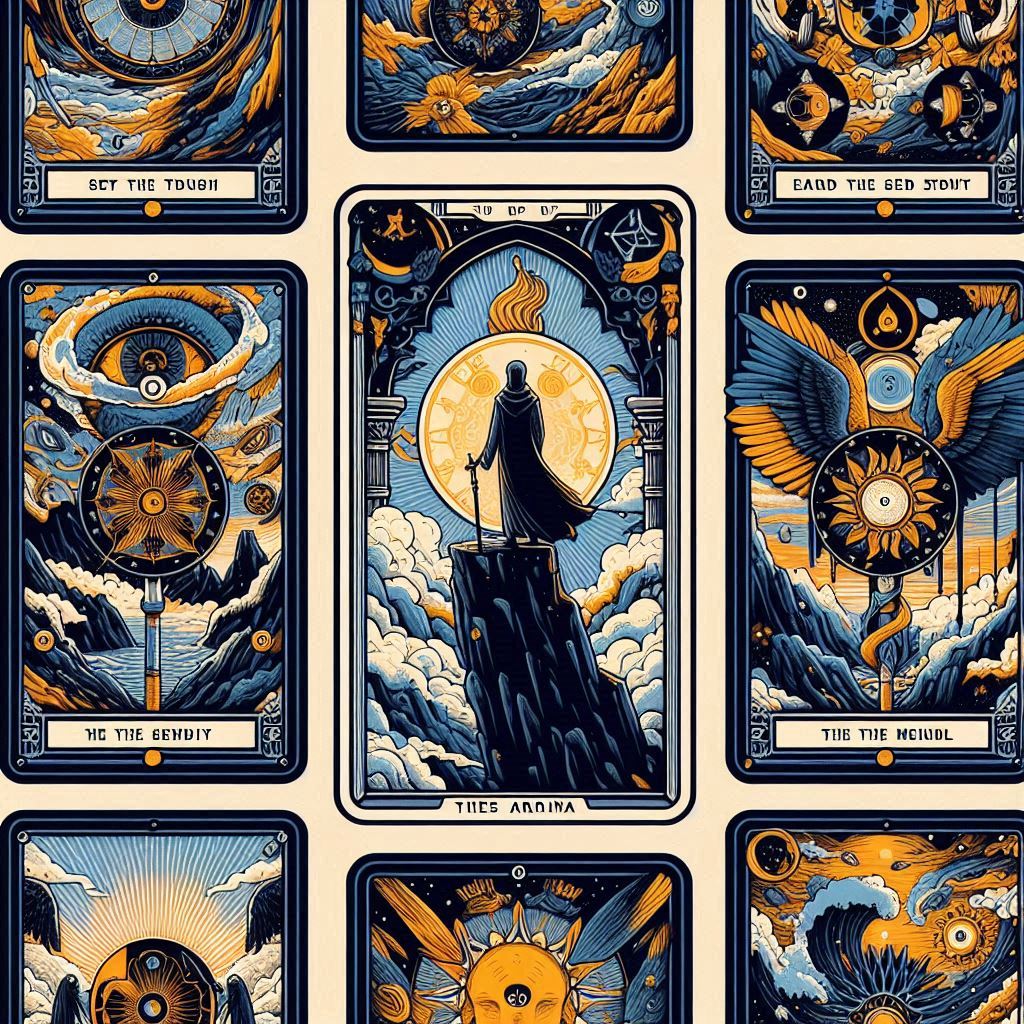
The Lovers: Sacred Union and Divine Choice
The Lovers card is often misunderstood as merely romantic—it is so much more. This archetype speaks to choice, integration, duality, and the merging of opposites. At its core, it represents the inner alchemy that occurs when you unite mind and heart, spirit and body, masculine and feminine.
Traditionally, the card depicts Adam and Eve with the angel Raphael above them, symbolizing the divine nature of partnership—but also the presence of moral decisions. The Lovers mark the moment when the Fool begins to confront values, passion, and consequences.
This card often arises when you’re facing a key decision—not just in love, but in any area where your alignment is being tested. Are you acting from your highest truth, or from fear, impulse, or external pressure?
Spiritually, The Lovers signify the reunion of sacred polarities—Yin and Yang, sun and moon, self and shadow. It’s not about finding your other half but discovering wholeness through relationship, whether with another or within yourself.
In its light, this archetype invites deep connection, divine love, and harmony. In its shadow, it may point to temptation, confusion, or fragmented identity.
The Lovers ask: Will you choose with love or illusion? Will you stay split, or will you merge?
This is not just a card of affection—it is a call to radical unity.
The Chariot: Mastery Through Alignment
The Chariot is a symbol of victory through control and discipline. Drawn by two opposing sphinxes or horses—often black and white—it represents the tension between polarities: logic and emotion, ambition and restraint. The Charioteer succeeds not by brute force but by mastering these internal drives.
This archetype arrives when you are ready to move forward—but only if your intentions, willpower, and emotions are aligned. When these forces are out of balance, the chariot stalls or veers off course. With inner harmony, it becomes unstoppable.
The Charioteer wears armor not for war, but for protection against distraction and doubt. His victory is spiritual as much as physical. He represents confidence earned through struggle and focus honed through trials.
When The Chariot appears, it asks: Are you steering your own life, or being pulled by unconscious forces? Are you clear on your direction, or chasing someone else’s path?
In shadow, The Chariot can become obsessive, overly controlling, or blind to nuance. But in its light, it is the warrior of will, capable of incredible progress when rooted in purpose.
The Chariot reminds you that success isn’t handed to you—it’s forged through alignment, focus, and bold movement forward.
Strength: The Power of Compassionate Control
Strength is the archetype of gentle power, where raw force meets spiritual maturity. In the card, a serene woman calmly tames a lion, not with chains or fear—but with compassion, patience, and presence. This is the mastery of the heart over the beast within.
Where The Chariot emphasized control through discipline, Strength shows us the inner alchemy of calming fear, anger, and instinct through love. The lion symbolizes our base desires—rage, passion, ego. The woman represents our higher self, guiding these forces without suppressing them.
This archetype appears when you are being asked to respond to life from the center of your being rather than the edge of reactivity. Are you meeting your challenges with grace, or brute will? Strength reminds you that true courage is quiet, enduring, and rooted in integrity.
It may also speak to healing. This card often comes up during times of emotional recovery, trauma processing, or internal transformation. The kind of strength it invokes is not about pushing through—it’s about staying soft in the face of hardship.
In its shadow, this archetype may show as weakness masquerading as submission, or dominance born of insecurity. But in its highest form, Strength reflects unshakable love—a lion-hearted resilience that moves mountains without violence.
This card whispers: You are stronger than you know. And strength is not about power over—but power with.
The Hermit: The Light Within the Darkness
The Hermit is the wise one, the seer, the elder. Carrying a lantern and walking staff, he retreats from the world not to escape—but to seek deeper truth. This archetype symbolizes solitude, introspection, and the inner path to wisdom.
When The Hermit appears, it’s a sacred call inward. Life may be asking you to step back from noise, expectations, or distractions. In the stillness, you begin to hear your soul’s voice again. The Hermit is not lonely—he is alone with purpose.
Spiritually, The Hermit represents a time of initiation. You may be entering a phase where outer validation no longer satisfies. The truths you seek now are not in books or in others—but in direct experience and silent reflection.
This card often arises during dark nights of the soul, spiritual awakenings, or times of deep questioning. It asks: Are you ready to walk your own path, even if no one understands?
The Hermit’s lantern represents the inner light that only becomes visible in the dark. He reminds us that wisdom is not found—it is remembered.
In shadow, this archetype can become detached, cold, or excessively withdrawn. But in its fullness, it is the soul-guide who returns with treasure.
You are not lost—you are wandering with purpose.
Wheel of Fortune: The Turning of the Great Cycle
The Wheel of Fortune is the great cosmic clock—ever turning, always in motion. This archetype speaks to fate, timing, destiny, and change. It reminds us that no condition is permanent, and that life moves in spirals, not straight lines.
At the center of the card is a massive wheel, often adorned with symbols of the four elements, alchemical glyphs, and the letters T-A-R-O (Tarot, or rota—Latin for “wheel”). Around it spin creatures representing the ever-shifting forces of life.
When this card appears, it signals a turning point. Something beyond your control may be influencing events. The question is: how are you responding to the changes around you? Are you clinging to what was, or surrendering to what is?
The Wheel teaches acceptance of impermanence. What rises will fall. What is lost may return. Your power lies not in resisting the cycle, but in staying centered while it turns.
On a deeper level, this archetype reminds us that we are part of a greater design. Synchronicities, karma, and soul contracts all converge in the dance of fate and free will. You are neither victim nor master of the Wheel—but a conscious participant.
In its shadow, this card can bring feelings of chaos, unpredictability, or fatalism. But in truth, it’s a call to trust the unfolding.
Everything is in motion. Your task is to stay still within the spin.
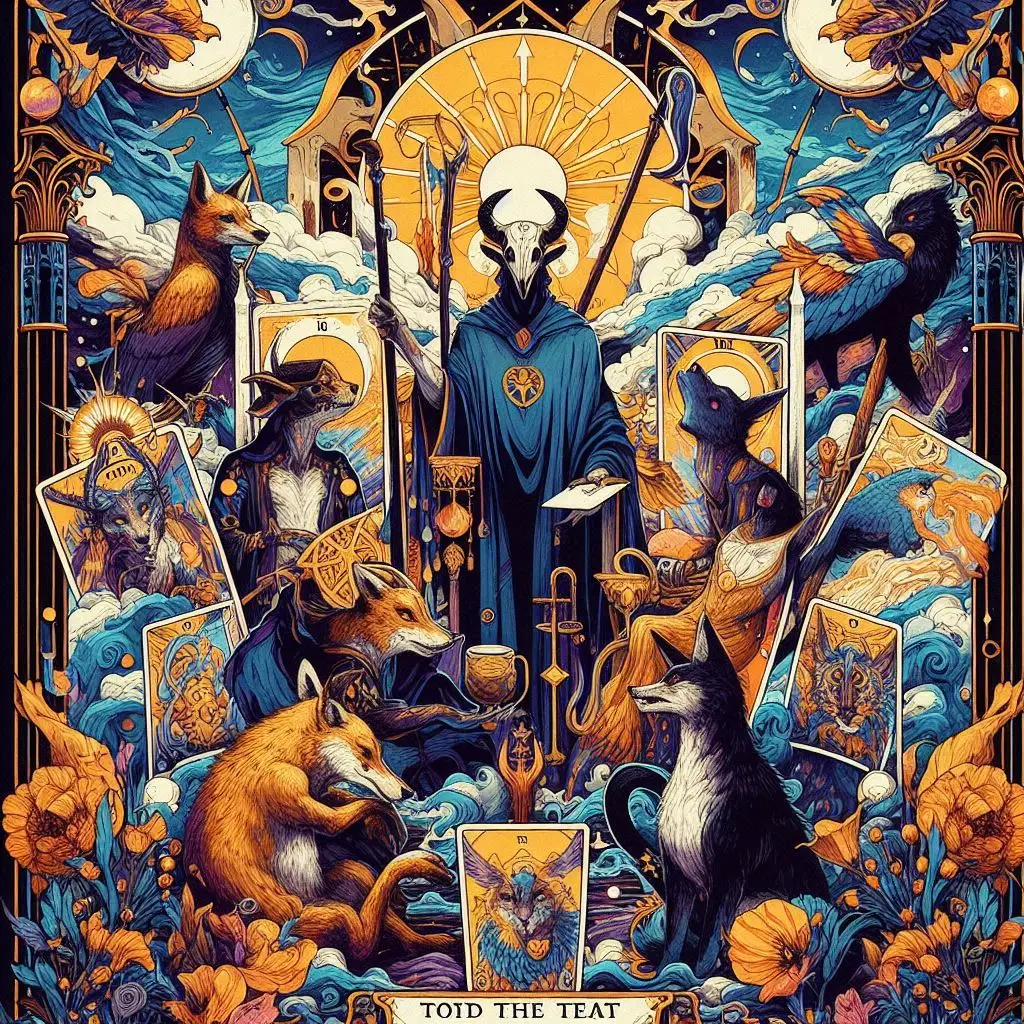
Justice: The Sword of Truth and the Scales of Karma
Justice is the archetype of truth, balance, and moral consequence. Seated on a throne with a sword in one hand and scales in the other, she reminds us that every action has a ripple, and every choice creates a karmic thread.
Unlike the emotional or intuitive guidance of other archetypes, Justice is objective. She sees clearly, without bias, distortion, or sentimentality. Her sword cuts through illusion. Her scales weigh not just actions, but intent.
This card often appears when you’re being called to own your truth—and face the consequences of past choices. It doesn’t mean punishment; it means equilibrium. If you’ve acted with integrity, this card can signify rewards or resolution. If not, it may be time to make amends or re-align.
On a higher level, Justice is a cosmic force, not just a legal or social concept. She’s the law of cause and effect at work in your soul’s journey. She invites you to take responsibility—not with guilt, but with clarity and courage.
Her shadow appears as self-righteousness, coldness, or moral rigidity. True justice isn’t about judgment—it’s about truth, and healing what has fallen out of balance.
To embody Justice is to be honest with yourself, stand firm in your values, and recognize that liberation only comes when you stop hiding from your own mirror.
The Hanged Man: The Sacred Pause and Shift in Perspective
The Hanged Man is one of the most paradoxical and mystical archetypes in the Tarot. Suspended upside-down, he doesn’t resist—instead, he surrenders. This card signifies letting go, non-action, and the power of seeing things from a new angle.
This archetype arises when the usual paths fail, when external striving no longer works, and when the soul asks for stillness. It often appears before great transformation, acting as the quiet before the storm. The Hanged Man is not stuck—he’s choosing to pause and reflect, to turn his world upside down so he can see the deeper truth.
In myth, this energy mirrors Odin hanging from Yggdrasil, sacrificing his comfort to gain higher wisdom. Similarly, The Hanged Man represents a willing sacrifice—of ego, of expectations, of control.
This card often comes during spiritual initiation. Life may feel on hold, but that doesn’t mean you’re lost. You’re being invited to release something: an outdated belief, a plan, a persona. In this suspension, new insight emerges.
The Hanged Man in shadow can look like avoidance or stagnation. But when embraced consciously, it becomes one of the most potent cards for awakening.
You’re not being punished—you’re being repositioned.
Death: The Great Transformation
Few cards are as feared—and misunderstood—as Death. But this archetype is not about literal endings. It is about transformation, release, and renewal. Just as leaves fall in autumn so spring can be born again, Death represents the necessary clearing away of the old to make space for the new.
This card marks a threshold moment. Something in your life—an identity, relationship, pattern, or belief—is no longer sustainable. Letting it die may feel painful, but clinging is far more costly.
The skeletal figure of Death rides a white horse, a symbol of purity and inevitability. Beneath him, kings and children alike must surrender—no one escapes this archetype. Yet, on the horizon, the sun rises. The message is clear: every death is also a beginning.
Spiritually, Death represents ego death, a core theme in mystical traditions. It’s the collapse of the false self so the true self can rise. This process may feel like darkness or chaos—but within it lies rebirth.
In its shadow, Death becomes stagnation—refusing to grow, hiding from change, clinging to the past. But when embraced, it is one of the most liberating archetypes of all.
This card asks: What must die so your soul can live more fully?
Temperance: Alchemy, Harmony, and Divine Flow
Temperance is the alchemist of the soul—the one who blends opposites into unity, finding the golden balance between extremes. Often depicted as an angel mixing water between two cups, this archetype speaks to integration, moderation, and higher alignment.
After the upheaval of Death, Temperance arrives to restore equilibrium. It doesn’t demand perfection—it invites flow. What’s needed now is patience, presence, and the wisdom to adjust rather than force.
This card often arises when you’re learning how to hold paradox: ambition and surrender, discipline and pleasure, mind and heart. Temperance teaches that opposing forces are not enemies—they are ingredients. Your task is to become the vessel where they can merge into something new.
On a deeper level, Temperance symbolizes spiritual alchemy—the art of refining your lower instincts into higher expression. It’s about being a channel between the divine and the earthly, the ideal and the real.
In shadow, this archetype can show up as avoidance of intensity, dilution of truth, or a fear of confrontation. But in its fullness, it is the harmony after chaos, the quiet miracle of synergy.
Temperance reminds you: You are the sacred mixing bowl. Be patient. The blend is becoming something beautiful.
The Devil: Bondage, Temptation, and the Illusion of Powerlessness
The Devil is the shadow in full display. It represents addiction, obsession, fear, and false attachments. But this archetype is not evil—it is the projection of your disowned self, the parts of you you’ve chained up in the basement of your psyche.
Often depicted as a horned figure with two bound individuals beneath him, The Devil shows us where we are enslaved—not by outside forces, but by our own beliefs, cravings, or avoidance of truth. The chains are loose. We stay bound because we think we must.
This card invites brutal honesty: What are you giving your power to? Where are you hiding behind masks, numbing out, or settling for less than truth?
Spiritually, The Devil is an initiator. He teaches through contrast. By confronting your shadows, illusions, and compulsions, you awaken to choice. He shows you the cage—but also the key.
In its shadow, The Devil consumes—shame, self-hatred, and manipulation fester here. But when integrated, this archetype becomes a powerful source of liberated energy. What you reclaim from the shadow becomes your strength.
The Devil is not your enemy. He is the doorman to freedom. The question is: Are you ready to break the spell?
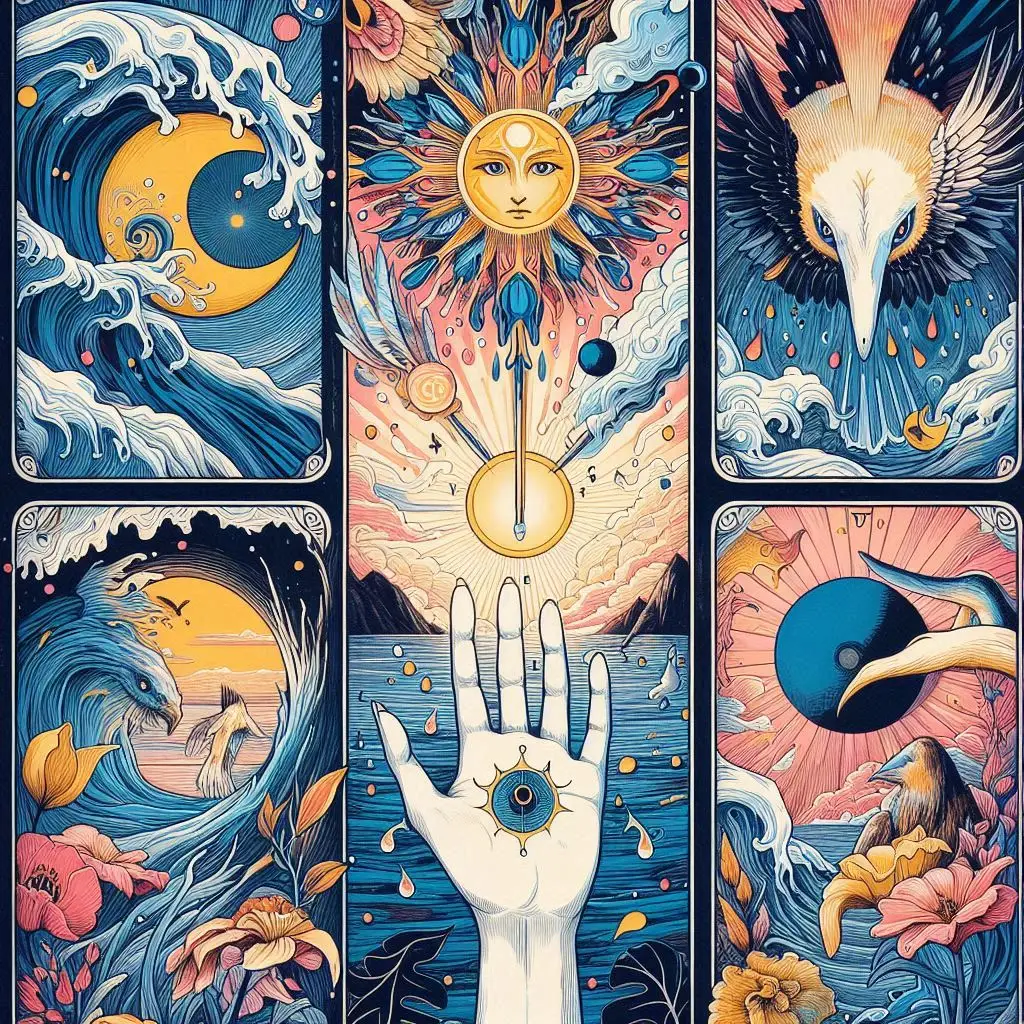
The Tower: Revelation Through Ruin
The Tower is dramatic, disruptive, and absolutely necessary. Depicting a lightning-struck tower with people tumbling from its heights, this archetype symbolizes the sudden collapse of false foundations—beliefs, identities, systems, or illusions that cannot sustain the weight of truth.
Unlike Death, which often comes gradually, The Tower is abrupt. It tears down what no longer serves, often without warning. While terrifying in the moment, it is an act of spiritual mercy. Better to shatter the lie now than build your life atop it.
This archetype appears when a major breakthrough is trying to occur, but something must fall away first—usually something the ego has clung to for too long. It might be a job, relationship, worldview, or mask. The Tower’s lightning is divine truth—raw, electrifying, non-negotiable.
In shadow, The Tower can bring devastation, denial, or trauma. But in its awakened form, it initiates radical liberation. What remains after the fall is real. It’s the soul’s clearing ground.
Spiritually, The Tower strips you of what you are not—so you can remember who you are. It burns the lie so that the truth may live.
When this card appears, don’t resist. Something bigger is trying to break through.
The Star: Light After Darkness
Emerging from the wreckage of The Tower, The Star is hope reborn. A naked figure pours water into a pool and onto the earth, reconnecting heaven and nature. This archetype represents healing, clarity, renewal, and divine guidance.
The Star doesn’t arrive with a thunderclap—it whispers. It reminds you that even after collapse, there is light. You may still be raw or uncertain, but you’ve passed through the storm. Now comes gentle realignment, cosmic support, and a return to trust.
This archetype often arises after spiritual crises, losses, or transformations. It encourages vulnerability, reminding you that your authenticity is your greatest light. You no longer need to perform or protect—you simply need to be.
The Star is also linked to spiritual purpose. It’s the moment when you realign with your soul’s calling, inspired not by ego, but by essence. It’s a card of guidance—trust that what you need will come.
In shadow, The Star can manifest as idealism without action or a fragile hope that fades under pressure. But when truly embraced, it is the radiant promise that all things can be made new.
You’ve found your light again. Now follow it.
The Moon: The Realm of Mystery and Illusion
The Moon is the realm of dreams, intuition, and the unconscious mind. Shrouded in fog and silence, this archetype brings you into the liminal space—the place between knowing and unknowing, clarity and confusion.
Often featuring a moonlit path flanked by wild animals and a distant tower, this card is the journey through shadow and illusion. It reminds us that not everything is what it seems. Truth must be felt here, not forced.
The Moon archetype calls you to trust your instincts. Logic may falter. Emotions may swirl. But deep beneath the surface, your soul is still guiding you. Let the tides of your inner world show you what needs to be healed, acknowledged, or released.
This card often surfaces during periods of deep spiritual initiation—when the veil between worlds is thin, and the ego begins to dissolve. Dreams may intensify, synchronicities increase, and fear may arise as old identities slip away.
In shadow, The Moon can represent paranoia, illusion, and escapism. But in its light, it teaches you to walk with grace through uncertainty, to see by inner vision.
You don’t need to see the whole path—just the next step.
The Sun: Radiance, Clarity, and Joyful Rebirth
The Sun is illumination, joy, and the full radiance of the soul. After the dreamlike confusion of The Moon, this archetype brings warmth, confidence, and the clarity of daylight. It’s the child on horseback, arms open, face to the sky—pure, conscious joy.
The Sun doesn’t just signify happiness—it signifies alignment. When you are living in harmony with your inner truth, joy becomes natural. You feel seen, empowered, and authentic. This card often marks a time of breakthroughs, creative flow, or spiritual integration.
The Sun archetype invites you to shine without apology. Let yourself be witnessed. Let yourself exist in your fullness. After cycles of death, shadow, and trial, this is your season of expression.
It also signals truth made visible. Hidden things are revealed under its light, but not to shame you—to liberate you. The Sun exposes what you are ready to own and celebrate.
In shadow, The Sun can become arrogance, performance, or blinding positivity. But when balanced, it is your divine essence, fully awake.
Let your light be seen. You’ve earned it.
Judgement: Awakening the Sleeping Soul
Judgement is the moment of resurrection. Often depicted with figures rising from coffins as a trumpet sounds, this archetype symbolizes spiritual awakening, life review, and rebirth—not as someone new, but as your truest self.
This card is not about external judgment—it’s about the soul calling itself back into alignment. After all the cycles of experience, you are now asked: Who have you become? What parts of you must be forgiven, released, or reclaimed?
Judgement brings a powerful opportunity for closure and renewal. It’s the karmic checkpoint before the final integration of The World. If you’re holding onto guilt, shame, or regret, this card invites you to forgive—to really forgive—and step forward whole.
This archetype also speaks to divine purpose. It’s the call that won’t stop ringing, the pull toward something greater than ego. To follow it requires courage—but ignoring it comes at a cost.
In shadow, Judgement can become self-criticism, fear of being seen, or paralysis in the face of change. But in its full light, it is the soul remembering itself.
You are no longer asleep. Rise. Answer the call.
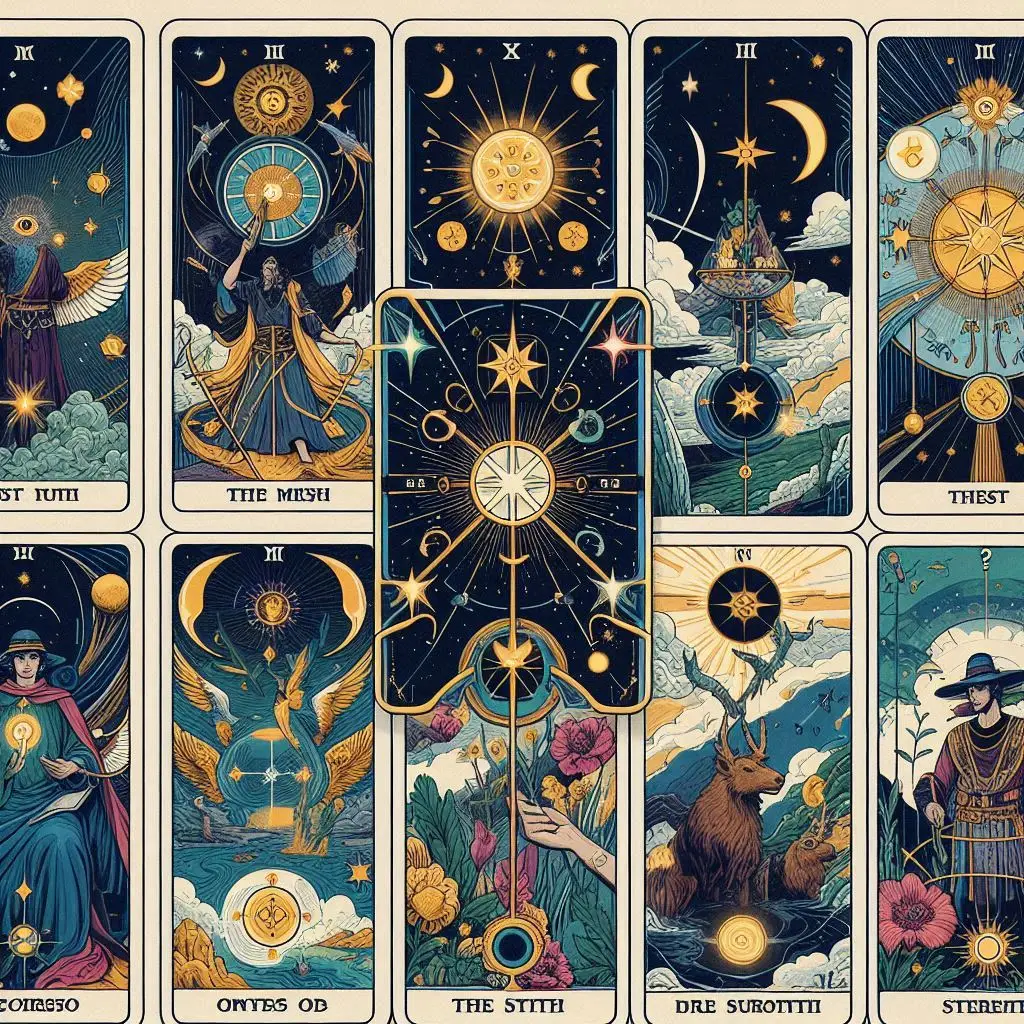
The World: Completion, Integration, and Cosmic Wholeness
The World is the final card of the Major Arcana—a symbol of wholeness, integration, and fulfillment. Surrounded by a wreath of victory and elemental beings, the central figure dances in total freedom. This is the completion of the Fool’s Journey—the return to self, now awakened and whole.
This archetype marks the end of a cycle—but not an ending in the traditional sense. It’s a culmination and rebirth into a higher spiral of consciousness. The lessons have been learned. The pieces have come together. The soul recognizes itself beyond illusion.
The World represents alignment with your true nature. No masks, no fragmentation—just you, embodied and empowered. It can also point to global consciousness, creative achievement, or stepping into your soul’s work in the world.
But this card also reminds us that endings are never final. The World is a doorway back to The Fool. Every integration brings a new adventure, a new unknown. The dance never stops.
In shadow, this card may appear when we resist closing a chapter, fearing that the next journey won’t come. But wholeness is not stagnation—it’s evolution.
To embody The World is to walk with grace, to hold paradox with peace, and to celebrate the ever-unfolding story of the soul.
You’ve arrived. And now, the spiral begins again.
ARCHETYPAL THEMES & APPLICATIONS
Archetypes and the Shadow: Embracing the Whole Self
Each archetype in the Tarot contains both light and shadow. The Magician can manifest miracles—or deceive. The Empress may nurture—or smother. The Tower may destroy—but also liberate.
To truly understand these archetypes is to embrace them in wholeness. Shadow work involves recognizing the parts of us we suppress, reject, or fear—and understanding how they show up through archetypal expression.
For example, you may resonate with The High Priestess’s intuition but resist her secrecy. Or you may fear The Devil’s chains, only to realize you wear them by choice. These moments of reflection are invitations—not punishments.
Working with the shadow side of archetypes allows you to reclaim lost power. What you hide controls you. What you own becomes strength.
Tarot becomes a mirror here—not just of who you are, but who you could be, once the unconscious becomes conscious.
The goal isn’t to perfect the self, but to integrate it. You are all of it—the saint and the serpent, the student and the master. Shadow work through archetypes creates deep healing and radical freedom.
Masculine and Feminine Archetypes in the Tarot
The Major Arcana offers a rich interplay between masculine and feminine polarities—not in terms of gender, but energy. The Magician and The Emperor express outward force, direction, and structure—yang qualities. The High Priestess and The Empress embody receptivity, intuition, and nurturing—yin qualities.
Neither is superior. True power arises when these forces are balanced and integrated.
You might feel drawn to certain cards depending on your energetic patterns. Too much masculine energy can lead to rigidity or burnout. Too much feminine energy may become indecision or stagnation. The Tarot offers tools to rebalance your energetic field.
For example, if you’re stuck in overthinking, meditating on The High Priestess can awaken inner knowing. If you’re overwhelmed by emotion, The Chariot can inspire willful focus.
Sacred union—the alchemical merging of these forces—is beautifully illustrated in The Lovers and Temperance. These cards don’t just reflect relationship dynamics; they symbolize internal harmony.
To evolve spiritually, you must learn to dance between action and stillness, control and surrender, voice and silence. The Tarot provides the archetypal language to master that dance.
Synchronicity and the Archetypal Mind
The Tarot doesn’t just reflect your psyche—it also responds to the universe. When a card shows up “randomly,” it’s anything but. That’s synchronicity—what Jung described as “meaningful coincidence.”
The archetypes in Tarot are alive within the collective unconscious, and they surface when something within you is ready to be seen. The appearance of a specific card is a signal from the archetypal realm that a certain lesson, quality, or energy is rising in your field.
The more you work with Tarot, the more uncanny the timing feels. You draw The Tower just as your life collapses. The Lovers shows up when you’re at a crossroads. The Hermit appears when you retreat from the world.
This isn’t chance—it’s resonance. Your energy attracts the archetype you need to work with.
Understanding Tarot through the lens of synchronicity allows you to trust the process more deeply. It’s not about trying to control outcomes, but becoming fluent in the symbolic language of your own soul.
The archetypes will meet you where you are—and guide you toward where you’re meant to be.
Using Archetypes for Personal Transformation
Tarot is more than a tool for insight—it’s a map for becoming. Working intentionally with archetypes lets you reshape your self-concept, rewrite inner stories, and evolve with conscious intent.
You can engage with archetypes actively:
Meditate on a card’s image to enter its energy field.
Journal from the voice of the archetype (“What would The Magician say to me today?”).
Invoke archetypes during rituals, affirmations, or spellwork.
Track your journey—notice which archetypes appear repeatedly and what lessons they bring.
These archetypes also teach you how to move through life phases. The Fool may guide a new beginning. Death helps you shed a layer of identity. The World helps you integrate and move on.
Working with Tarot regularly begins to reshape how you see your life. Challenges become initiations. Loss becomes alchemy. You begin to realize: every experience is an archetype unfolding.
You don’t just read Tarot—you live it. And in doing so, you begin to consciously evolve.
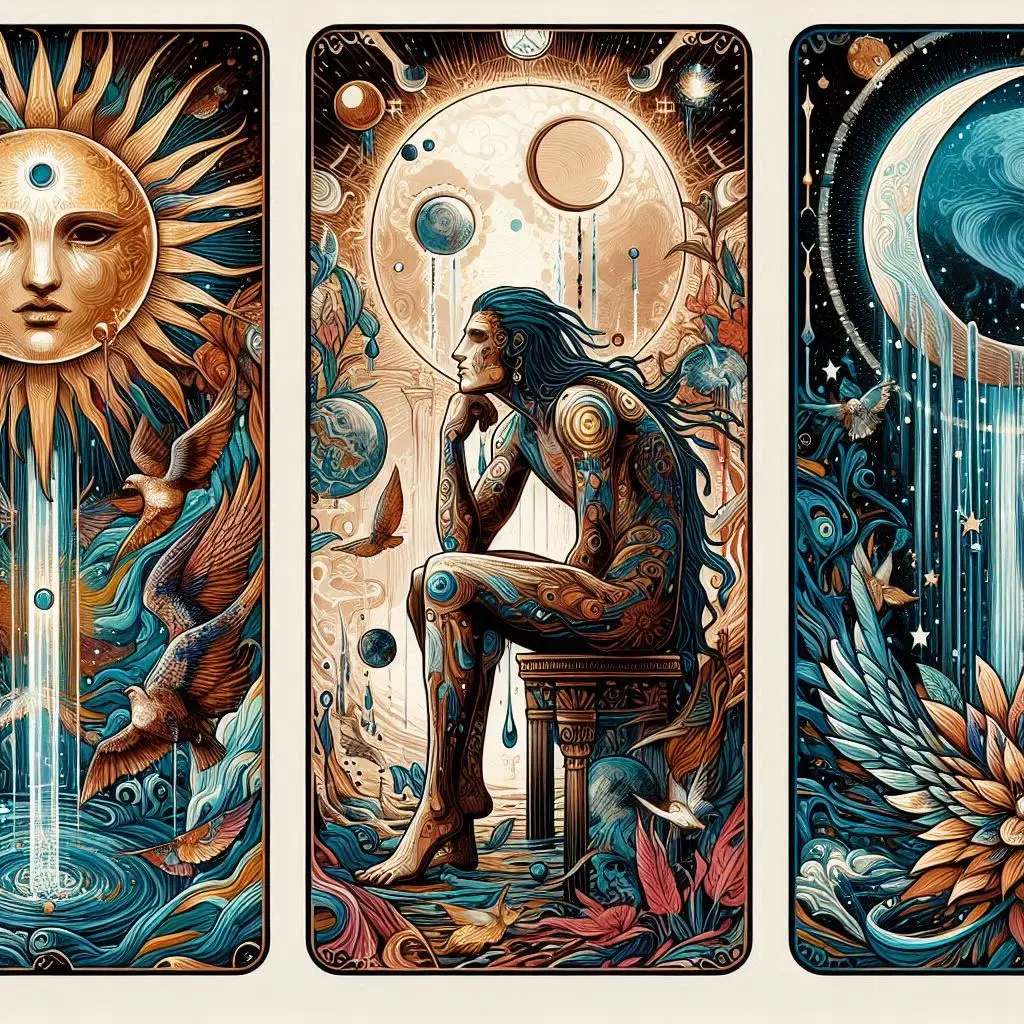
Becoming the Fool Again
The Tarot begins and ends with The Fool—not as a mistake, but as a profound truth. The Fool is both the first and the last archetype, the seed and the fruit, the beginner and the master. After traveling through all twenty-one stages of the Major Arcana, the soul returns—wiser, humbler, and ready to leap once again.
But this time, the leap is different.
You no longer fear the unknown—you welcome it. You no longer resist The Tower—you trust that its fall reveals what is real. You’ve danced with The Devil, died with Death, healed with Temperance, and risen with Judgement. You’ve felt the radiance of The Sun and the pull of The Moon. You’ve tasted The World.
And now… the journey begins again.
This is the sacred spiral of growth. The Fool’s Journey is not linear—it is cyclical, infinite. Every time you think you’ve “arrived,” life opens a new door. Every time you think you’ve finished, you’re handed a fresh pack of lessons.
But you’re no longer walking blind.
Now, you walk with awareness of the archetypes within you. You know when you’re The Hermit in retreat, or The Chariot in motion. You recognize when you’re trapped in The Devil, or ready to birth something new as The Empress. You’ve seen yourself reflected in each card—and now, you have the language of the soul itself.
Tarot becomes your mirror, your compass, your map.
And The Fool? The Fool becomes your guide—not a naive wanderer, but a fearless soul who trusts the path, leaps without fear, and laughs at the mystery of it all.
You are The Fool. Again. Always.
And this is where your real journey begins.

